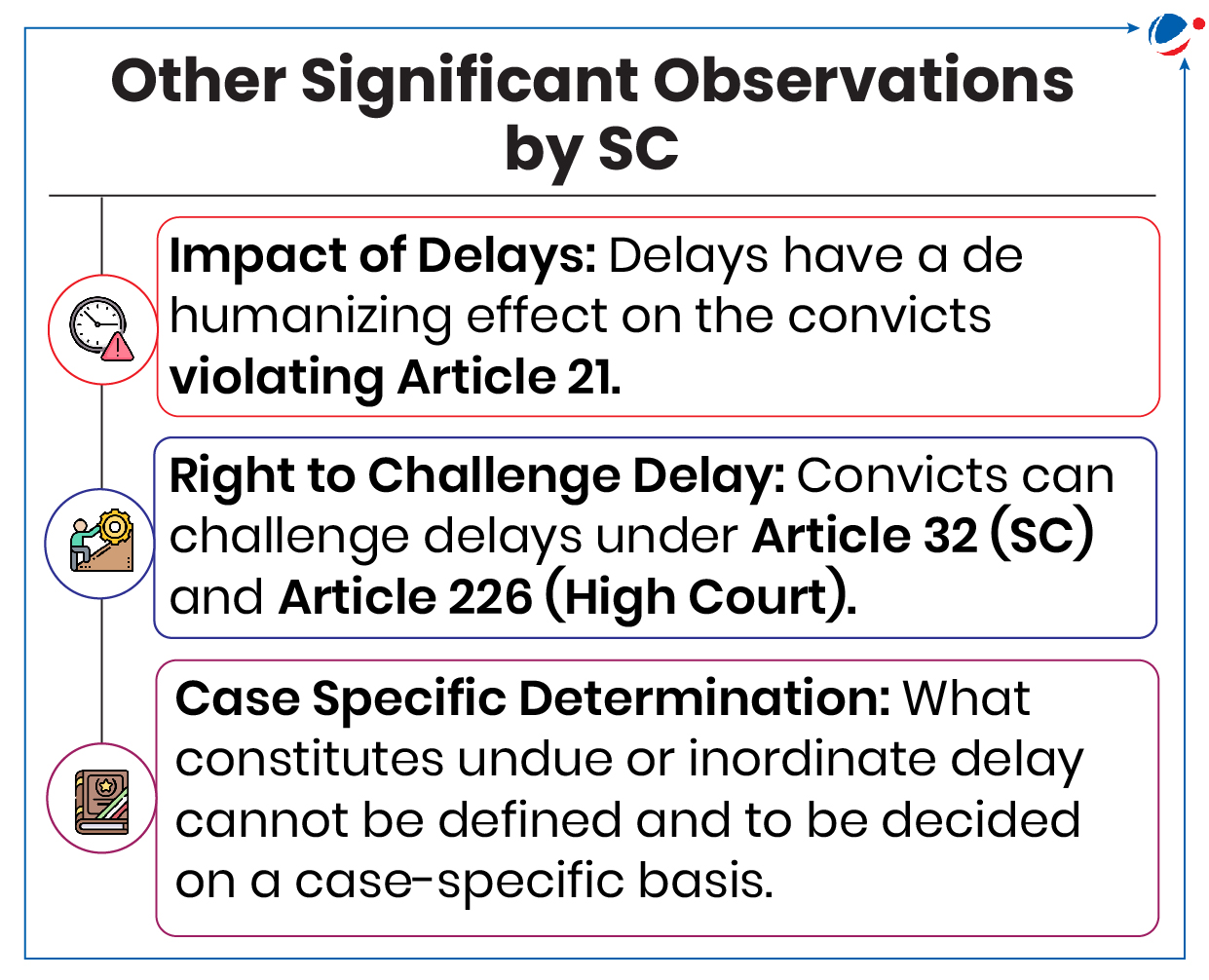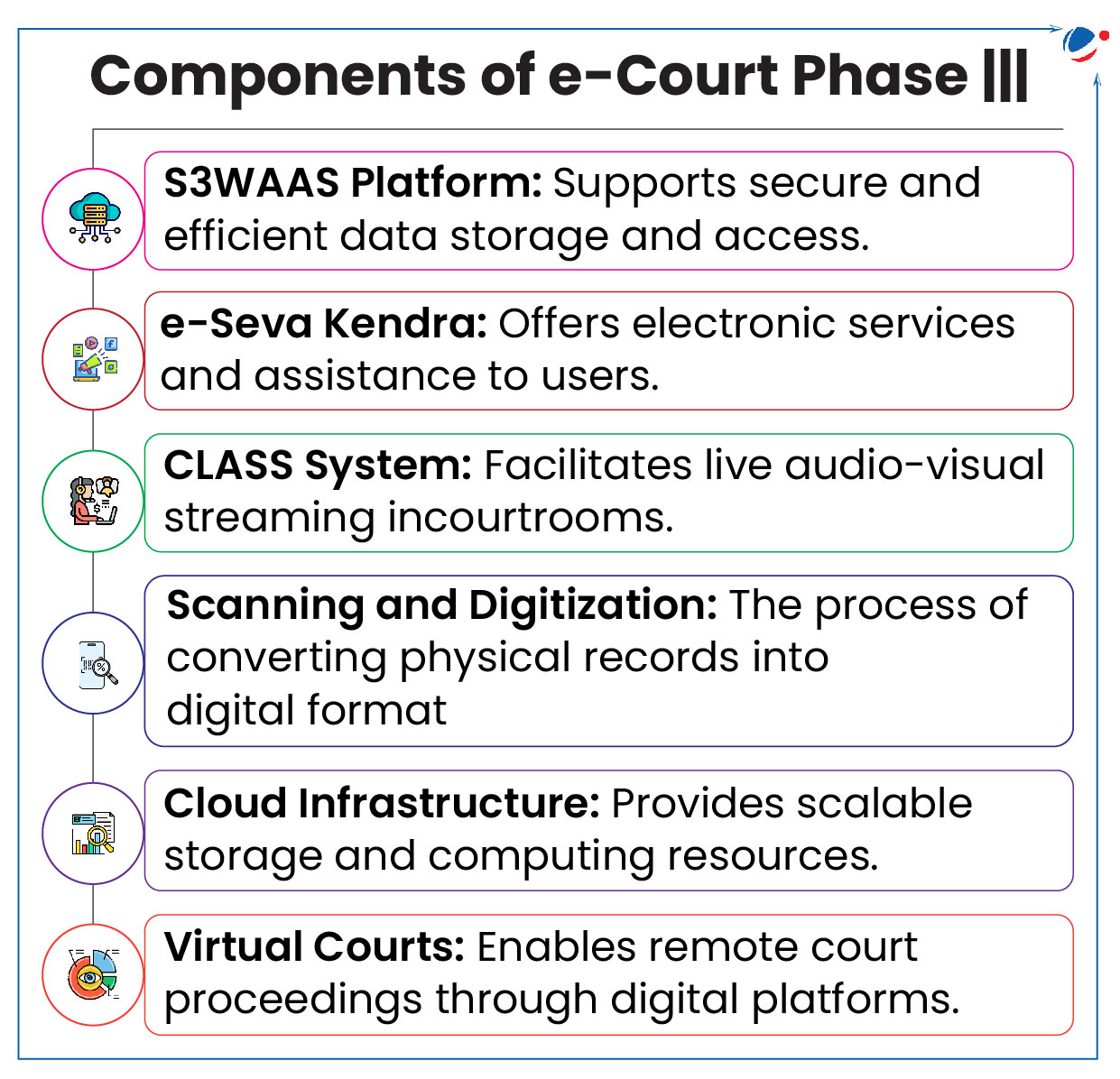Process For Removal of Rajya Sabha Chairperson
Opposition has moved a motion of No-confidence against Rajya Sabha (RS) Chairperson.
- As per Article 64, Vice President (VP) shall be ex officio Chairperson of RS.
About Constitutional Removal Procedure
- Notice Period: 14-day notice is to be given prior to moving a Resolution, outlining clear intentions.
- Passing of a Resolution: As per Article 67(b), VP can be removed from office by a resolution passed by RS with a majority of all its members and agreed to by Lok Sabha with a simple majority.
- Unlike provisions for removal of President, the Constitution does not specify grounds for removal of VP.
- Tags :
- Vice President
- Rajya Sabha Chairperson
- Article 64
SC Guidelines on Mercy Petition
Supreme Court (SC) issued guidelines on processing of Mercy Petitions to States/UTs.
- Pronounced in the State of Maharashtra vs. Pradeep Yashwant Kokade case, guidelines seek to streamline the mercy petition and death penalty execution processes avoiding undue delays, safeguarding convicts’ legal rights, etc.

Major Guidelines issued by the SC
- Dedicated Cells for Mercy Petitions: To be established by States and UTs to handle mercy petitions and process them promptly within the prescribed timeframe.
- Attachment of Judicial Officer: An official from the Law and Judiciary Department to be attached to the dedicated cell.
- Information Sharing and Documentation: Prison authorities must forward mercy petitions to the dedicated cell and call for information from police stations and investigation agencies, etc.
- Coordination with Governor and President's Secretariats: Mercy petitions must be forwarded to these secretariats for further action.
- Electronic Communication: Communications should be conducted via email to ensure efficiency, barring cases that require confidentiality.
- Guidelines and Reporting: State Governments to issue executive orders detailing procedures for handling mercy petitions.
- Implementation: States/UTs to report compliance with the SC directions within three months.
- Guidelines to Sessions Courts: Maintain record of such cases, issue notices to public prosecutors or investigative agencies for pending appeals.
- Execution warrants: To be issued by the State immediately after the death penalty becomes enforceable.
About Mercy Petition
|
- Tags :
- Article 72
- Mercy Petition
- Article 161
- Section 472(1) of BNSS
E-Courts Mission Mode Project Phase III
Union Cabinet approved Phase III of the e-Courts Mission Mode Project.
- The e-Courts Mission Mode Project phase III aims to usher in a regime of maximum ease of justice by moving towards digital, online and paperless courts through digitization of the entire court records.

- The e-Courts Project is under implementation since 2007 for ICT enablement of Indian Judiciary as part of National e-Governance Plan.
- Its phase I & II were implemented during 2011-15 and 2015-23 respectively.
About the e-Courts Phase III
- Central Sector Scheme: For 4 years (2023 to 2027) with a financial outlay of Rs.7,210 crore.
- Objective: To create a unified technology platform for judiciary, thus providing a seamless & paperless interface between courts, litigants & other stakeholders.
- Implementation: High Courts (HCs).
- Funds are released to HCs by Department of Justice (Ministry of Law) on recommendation of e-Committee (Supreme Court of India).
- The e-Committee is responsible for the policy planning, strategic direction and guidance for implementation of e-Courts project.
Significance of Digitalization of Courts
- Judicial Modernization: Enables data-driven decisions, fully digitizing justice delivery.
- Reducing case pendency: By integrating emerging technologies like AI, Optical Character Recognition, etc., courts can improve efficiency & reduce pendency.
- Tags :
- National e-Governance Plan
- e-Courts Mission Mode Project
- E-Courts Mission
Amrit Gyaan Kosh Portal
Amrit Gyaan Kosh Portal on iGOT platform jointly developed by Capacity Building Commission and Karmayogi Bharat launched.
About Amrit gyan kosh Portal:
- Purpose: Capacity Building Commission aims to empower educators and enhance the quality of public administration training across India.
- This comprehensive repository curates’ best practices from across India, aligning with 15 of the 17 Sustainable Development Goals (SDGs)
- It encompasses diverse policy themes such as health, education, agriculture, and digital governance.
About iGOT Karmayaogi platform
- All-in-one online platform for civil service officials.
- It guides learning, hosts discussions, manages careers, and conducts reliable assessments to showcase officials' competency effectively.
- Tags :
- Amrit Gyaan Kosh Portal
- Capacity Building Commission
- Karmayogi Bharat
Articles Sources
E-Daakhil Portal
The Department of Consumer Affairs announces the nationwide implementation of the E-Daakhil portal.
About E-Daakhil portal
- It was first launched by the National Consumer Dispute Redressal Commission (NCDRC) in 2020.
- NCDRC is a quasi-judicial commission set up under the Consumer Protection Act of 1986.
- It is an online platform that simplifies the consumer grievance process, allowing consumers to file complaints and track cases without the need to be physically present.
- The portal has been a key tool in promoting consumer rights and delivering timely justice.
- Tags :
- E-Daakhil Portal
- Department of Consumer Affairs
- National Consumer Dispute Redressal Commission
Articles Sources
The Boilers Bill, 2024 Passed in The Rajya Sabha
The Bill replaces Boilers Act, 1923 and incorporates the provisions in consonance with the Jan Vishwas (Amendment of Provisions) Act, 2023.
- The Bill will ensure the safety of life and property of persons from the dangers of explosions of steam boilers.
Key provisions of the Bill
- Regulation: Centre will constitute Central Boilers Board to regulate the design, manufacture, erection and use of boiler and boiler components.
- Inspection: Inspections can be carried out by State-appointed Inspectors or authorized third parties.
- Ease of Doing Business (EoDB): Of the 7 offences in the erstwhile Act only 4 serious offences involving loss of life or property have been retained for criminal penalties.
- For all non-criminal offences ‘fine’ has been converted into ‘penalty’ to be levied through executive mechanism instead of courts as existed earlier.
Issues associated with Bill
- Safety Concerns: The state government can exempt areas from the Bill, raising doubts about ensuring safety in exempted zones.
- Limited Judicial Recourse: Decisions of the central government and state-appointed inspectors cannot be challenged in regular courts. Aggrieved individuals must file writ petitions in High Courts under Article 226 of the Constitution.
- Hindrance to EoDB: No timelines are set for inspections, or approvals for boiler alterations, repairs, or erection.
About Boilers
|
- Tags :
- Jan Vishwas (Amendment of Provisions) Act, 2023.
- The Boilers Bill, 2024
- Boilers



